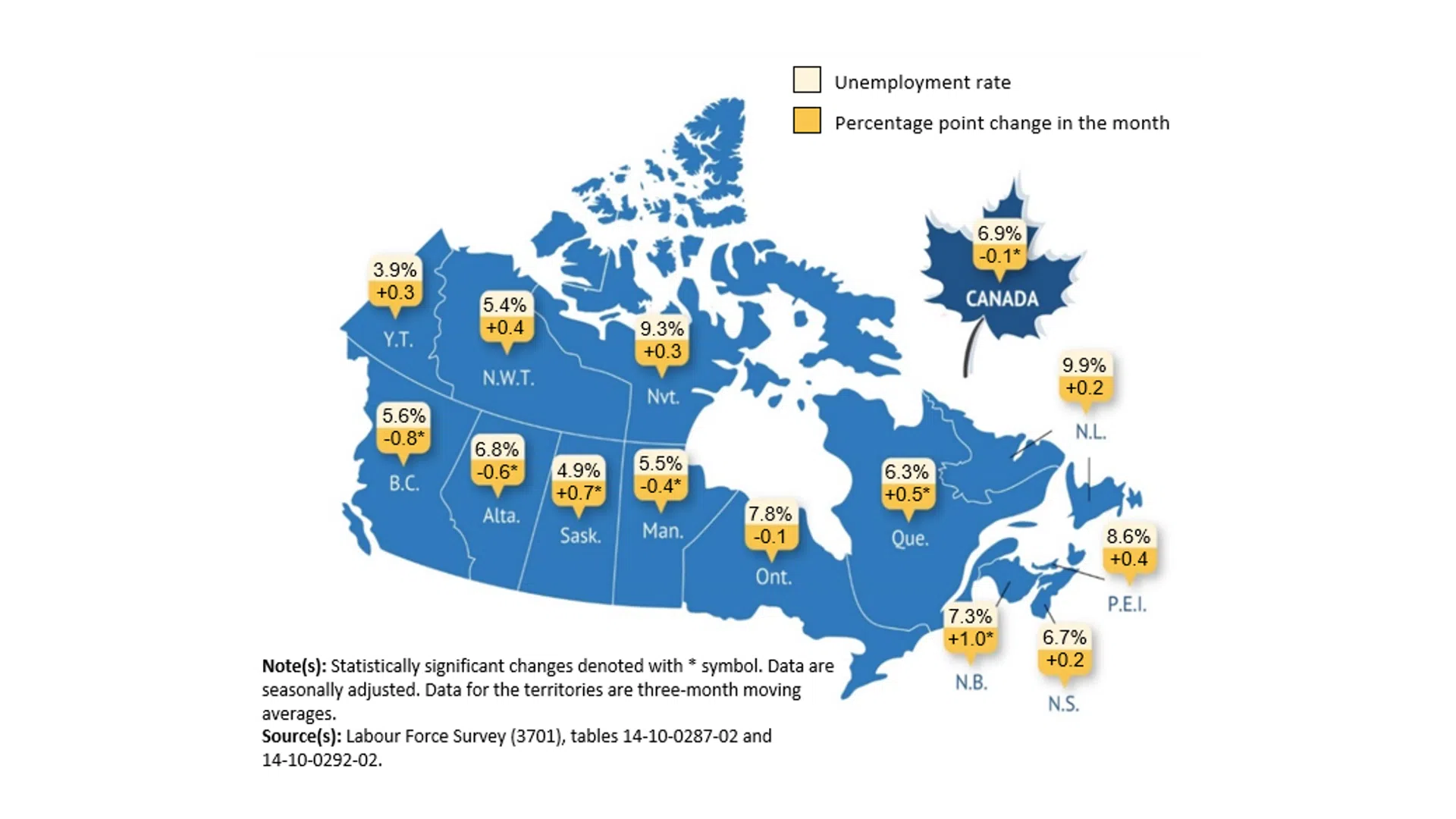Canada’s unemployment rate ticked down to 6.9 per cent in June, according to Statistics Canada.
The latest labour force survey shows employment rose by 83,000 — the first net increase since January.
StatCan said employment growth was concentrated in part-time work, with an increase of 70,000 jobs.
Increases were observed in wholesale and retail trade, as well as health care and social assistance.
Those boosts were concentrated among people in the core working age group of 25 to 54 years old.
The unemployment rate was highest among youth at 14.2 per cent, up 0.7 percentage points on a year-over-year basis.
StatCan said employment increased in both the private and public sectors, while the number of self-employed workers was little changed.
Average hourly wages among employees increased 3.2 per cent, or $1.10, on a year-over-year basis to $36.01, following growth of 3.4 per cent in May.
A look at some of the provincial numbers
New Brunswick gained 300 full-time jobs but lost 1,500 part-time positions for an overall employment drop of 1,200.
Combined with an increase in the labour force, the unemployment rate jumped a full percentage point to 7.3 per cent.
Nova Scotia lost 1,900 full-time jobs and 1,400 part-time positions for an overall decrease of 3,400.
As a result, the province’s unemployment rate increased 0.2 percentage points to 6.7 per cent.
Prince Edward Island lost 200 jobs as the unemployment rate in that province climbed to 8.6 per cent.
In Ontario, the province lost 10,600 full-time positions but gained 31,700 part-time jobs for a net increase of 21,200.
That pushed the unemployment rate down to 7.8 per cent from 7.9 per cent the previous month.
Statistics Canada defines the labour force as everyone aged 15 or older who has a job or is actively looking for one.
The full report can be found on the agency’s website.








